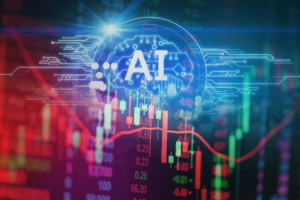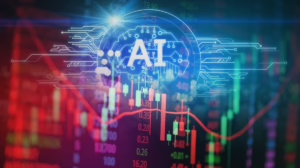The Role of AI in Climate Change: Solutions for a Sustainable Future
In recent decades, climate change has emerged as one of the most pressing challenges facing humanity. With global temperatures rising, sea levels increasing, and extreme weather patterns becoming more frequent, the need for effective solutions has never been more urgent. In this context, Artificial Intelligence (AI) is increasingly recognized as a powerful tool that can help address various aspects of climate change. From optimizing energy consumption to enhancing predictive models, AI has the potential to contribute significantly to a sustainable future.
Understanding Climate Change
Climate change refers to long-term shifts in temperatures and weather patterns, primarily driven by human activities such as burning fossil fuels, deforestation, and industrial processes. The consequences are dire: loss of biodiversity, increased frequency of natural disasters, food insecurity, and threats to human health. The Intergovernmental Panel on Climate Change (IPCC) has reported climate change’s extensive impacts, reinforcing the need for prompt and effective action to mitigate its effects.
Key Contributors to Climate Change
-
Fossil Fuel Emissions: The combustion of coal, oil, and natural gas releases significant amounts of carbon dioxide (CO2) and other greenhouse gases (GHGs) into the atmosphere.
-
Deforestation: Trees absorb CO2, but deforestation releases stored carbon back into the atmosphere, exacerbating the greenhouse effect.
-
Agricultural Practices: Agriculture, through methane emissions from livestock and nitrous oxide from fertilization, contributes notably to GHGs.
-
Industrial Processes: Various industrial activities release substances that contribute to climate change, including CO2 and other hazardous pollutants.
The Need for Innovative Solutions
To combat climate change effectively, innovative solutions that leverage technology are essential. Among these solutions, AI stands out due to its capacity for analysis, prediction, and optimization, opening doors to sustainable practices across different sectors.
The Role of AI in Climate Solutions
Artificial intelligence can address climate change in various sectors, including energy, transportation, agriculture, and more. Here are some key areas where AI is making a significant impact:
1. Energy Optimization
Smart Grids
AI can enhance the efficiency of energy distribution through smart grids. By analyzing consumption patterns and predicting energy demand, AI systems can optimize load balancing, reducing waste and enhancing the integration of renewable energy sources such as wind and solar power.
Example: Google DeepMind
Google’s DeepMind project has successfully reduced energy usage in data centers by up to 40% through AI algorithms that predict energy consumption and make real-time adjustments to cooling systems.
Energy Efficiency in Buildings
AI-driven tools can analyze building data to optimize energy use. For instance, AI can control heating, ventilation, and air conditioning (HVAC) systems, making them more efficient.
Modern Reference: Carbon Lighthouse
Carbon Lighthouse uses AI to identify energy-saving opportunities in commercial buildings. Through their analysis, they have helped companies reduce carbon emissions significantly.
2. Transportation and Urban Planning
AI-Driven Autonomous Vehicles
Self-driving cars can reduce emissions by optimizing driving patterns, reducing congestion, and minimizing the need for parking space. Moreover, AI can facilitate ridesharing and public transportation optimization.
Case Study: Waymo
Waymo’s autonomous vehicles are designed to reduce traffic congestion and improve energy efficiency, potentially lowering urban GHG emissions considerably.
Traffic Management Systems
Smart traffic lights controlled by AI can adapt to real-time traffic conditions, reducing idle times and optimizing flow. Such systems have been implemented in several cities around the world.
Example: Barcelona’s Traffic Management
Barcelona has employed AI to manage its traffic system dynamically, leading to reduced emissions and improved traffic flow.
3. Agriculture
Precision Agriculture
AI-powered tools can optimize farming practices by analyzing satellite data to determine optimal planting times, monitor crop health, and manage resources like water and fertilizers efficiently.
Modern Reference: Climate Corporation
The Climate Corporation uses AI to provide farmers with insights on crop management, helping them make data-driven decisions that enhance yield while minimizing environmental impact.
Crop Monitoring and Pest Control
AI technologies can also be deployed for real-time monitoring of pest infestations and diseases, allowing for targeted pesticide use. This approach significantly reduces the overall usage of chemicals in farming.
4. Climate Modeling and Predictions
Enhanced Climate Models
AI can improve climate models by analyzing massive datasets to identify patterns and correlations that traditional methods may overlook. This capability allows for better predictions of climate-related events.
Example: Climate and AI Lab
The Climate and AI Lab utilizes machine learning algorithms to enhance climate forecasts, aiding policymakers in making informed decisions.
Natural Disaster Preparedness
AI can analyze various factors, such as weather patterns and geographical data, to predict natural disasters and their potential impact. This information can help governments and communities prepare effectively.
5. Carbon Capture and Storage
Advancements in Technology
AI can optimize the design and operation of carbon capture systems, determining the most efficient methods for capturing and storing CO2 emissions.
Modern Reference: Carbon Clean Solutions
Carbon Clean Solutions employs AI to enhance carbon capture technologies, effectively reducing emissions from industrial processes while improving efficiency.
6. Sustainable Supply Chains
Optimization of Resource Use
AI can streamline supply chains by predicting demand and optimizing resource allocation, minimizing waste and unnecessary emissions.
Example: UPS and Route Optimization
UPS has harnessed AI to optimize delivery routes, substantially reducing fuel consumption and related GHG emissions.
7. Public Awareness and Engagement
AI- Driven Campaigns
AI can analyze public sentiment and engagement data to design effective campaigns that educate and encourage communities to adopt sustainable practices.
Case Study: WWF’s AI Tools
The World Wildlife Fund (WWF) has employed AI-driven tools to engage communities in conservation efforts, increasing participation in sustainability initiatives.
Challenges and Ethical Considerations
While AI presents promising solutions for climate action, challenges and ethical considerations must be addressed:
1. Data Privacy and Security
With the increasing reliance on AI comes the concern for data privacy. Sensitive information about individuals’ energy usage or transportation patterns must be protected.
2. Resource Inequality
The implementation of AI solutions may disproportionately benefit developed countries with robust technological infrastructure. Ensuring equitable access to these innovations is crucial for global climate justice.
3. Predictive Reliability
AI’s predictive capabilities rely heavily on the quality of data. Inaccuracies in data collection can lead to erroneous conclusions, compromising the effectiveness of AI-driven interventions.
4. Ethical AI Development
Developers must adhere to ethical guidelines in creating AI systems to ensure they benefit society and the environment.
Conclusion: A Sustainable Future Powered by AI
The urgency of addressing climate change calls for innovative solutions that leverage technology, and AI stands at the forefront of this effort. By optimizing energy efficiency, transforming transportation systems, improving agricultural practices, and enhancing predictive capabilities, AI can contribute significantly to a sustainable future.
However, realizing this potential requires collaboration among governments, businesses, and communities. Effective policies, equitable access to technology, and ethical practices in AI development are essential components for a successful transition toward a more sustainable world.
Looking Ahead: A Call to Action
As we navigate the complexities of climate change, we must harness the power of AI responsibly and inclusively. By integrating AI into our sustainability efforts, we can pave the way for innovative solutions that mitigate climate impacts and foster resilience, ensuring a brighter and more sustainable future for generations to come.
Modern Footnotes
- Google DeepMind, “Reducing Energy Usage in Data Centers”.
- Carbon Lighthouse, “Optimizing Energy Consumption in Commercial Buildings”.
- Waymo, “The Future of Autonomous Vehicles in Urban Areas”.
- Barcelona Traffic Management, “How AI is Optimizing Traffic Flow”.
- Climate Corporation, “Precision Agriculture and Data-Driven Decisions”.
- Climate and AI Lab, “Enhancing Climate Models with Machine Learning”.
- Carbon Clean Solutions, “Improving Carbon Capture Technology”.
- UPS, “AI and Route Optimization for Delivery Efficiency”.
- WWF’s AI Tools, “Engaging Communities in Conservation”.
This overview provides a glimpse into the multifaceted role of AI in combatting climate change. The ongoing technological advancements, when paired with a commitment to ethical and inclusive practices, can lead to a sustainable future that benefits all of humanity and the planet.


























Add Comment